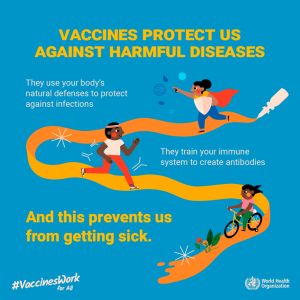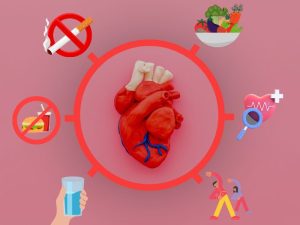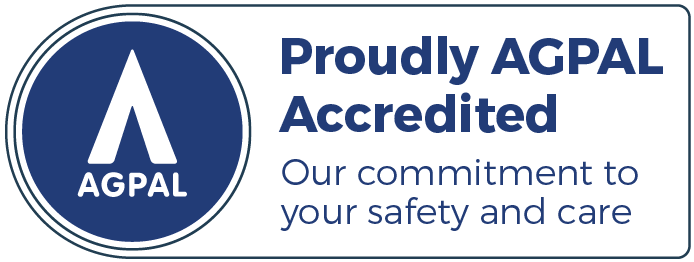Melanoma: the most dangerous type of skin cancer. As we’ll discover, the disease wasn’t given its description lightly.
Melanoma is a type of skin cancer that develops from melanocytes, the cells that produce melanin (responsible for skin pigmentation), resulting in often serious health consequences if not treated early.
Sadly, one Australian dies from melanoma every 6 hours.
But it’s not all scary news. IF caught early, 90% of melanomas can be cured through medical intervention.
That’s why HSMC puts emphasis on skin health and sun protection
The way to catch melanoma and other skin issues early is through skin checks.
Skin checks are quick, simple and painless, and part of everyone’s health routine.
Taking place in our private consultation rooms, a skin check allows a doctor to thoroughly inspect your skin for changes, new spots or lesions and anything suspicious.
If it’s been around 12 months or more since your last skin check, you’re likely overdue. The doctors at HSMC recommend annual skin checks.
We’re certainly not alone in the quest for better skin health
Melanoma March is a good example. Held throughout March, the community fundraising event organises marches all around Australia in support of melanoma sufferers and important research.
It’s easy to see where the name comes from.
The cause is however, an extremely important one. As pointed out by Melanoma March, it’s estimated 1,300 Australians will die from melanoma this year.
Underscoring the ultimate goal of zero deaths from melanoma, in this article, we explain:
- What melanoma is
- Why melanoma is so dangerous here in Australia
- Who’s at risk (hint: everyone)
- Minimising your risks
What melanoma is
Melanoma is a type of skin cancer that originates from melanocytes, the cells responsible for producing melanin, the pigment that gives skin its colour.
It typically appears as an abnormal mole or dark spot on the skin but can also develop in other parts of the body, including eyes and fingernails.
If left untreated, melanoma can spread to other organs and become life-threatening.
It’s this spreading to other parts of the body that doctors aim to prevent or catch early through skin checks.
When melanoma spreads to other organs, it can lead to severe complications and potentially become deadly.
This occurs as cancer cells travel through the bloodstream or lymphatic system, causing tumours in distant parts of the body and impairing or preventing the function of vital organs.
Excessive sun exposure is almost always the cause.
Sun exposure can cause melanoma by damaging the DNA in skin cells, leading to mutations that trigger uncontrolled cell growth and division.
Ultraviolet (UV) radiation from the sun is particularly harmful, as it can penetrate the skin and directly affect melanocytes.
Here’s the process of melanoma development:
- Exposure: UV radiation from the sun reaches the Earth’s surface and penetrates the skin.
- DNA Damage: UV radiation damages DNA in skin cells, including melanocytes.
- Mutation: The DNA damage leads to the formation of mutations.
- Cellular Changes: These mutations disrupt regulation of normal cell growth, causing affected melanocytes to multiply uncontrollably.
- Melanoma Development: Over time, the uncontrolled growth of mutated melanocytes can lead to the formation of a melanoma.
Why melanoma is so dangerous here in Australia
Take a look at a recent weather forecast from the Bureau of Meteorology.
Notice anything consistent? (Other than the not-so-nice weather)

Answer: All three days, regardless of cloud cover, cooler temperatures of 21 and even showers, have a UV Index of 9 [Very High].
According to Sun Smart’s MyUV, a UV index of 9 means:
“Avoid being outside during midday hours! Make sure you seek shade! Shirt, sunscreen and hat are a must!”
This is for good reason.
Climates with strong, harsh sun where people spend more time outdoors and prefer tanned skin shades contribute to much higher risks of melanoma.
Melanoma is particularly common in Australia due to:
- Our proximity to the equator, resulting in higher UV radiation exposure
- The outdoor lifestyle and culture
- Trends of sun-seeking behaviour, such as tanning and time at the beach
- Ozone depletion: Australia experiences significant ozone depletion
- Long hours of sunshine in summer months
Skin damage by ultraviolet radiation accounts for at least 95% of all skin cancers in Australia.
Who’s at risk
Like we hinted above, melanoma can affect everyone, no matter their complexion or lifestyle.
The risks do increase with certain factors, however. Here are some higher risk factors in no particular order:
Fair skin
Those at risk of melanoma can include people with fair skin as they typically have less natural protection against UV radiation.
However, these risks can be minimised by correct sun protection, which includes:
- Wearing sunscreen when you spend time outdoors
- Long sleeves, hat and sunglasses
- Keeping in the shade, especially on sunny days
History
People with a history of sunburns, a large number of moles, a family history of melanoma, or a weakened immune system are at higher risk.
Lifestyle
Some jobs, like certain tradies and those in transport, see high levels of time outdoors. Also, people who have outdoor hobbies like sports, swimming, fishing, some DIY and gardening can be at higher risk.
Additionally, unhealthy lifestyle choices that include smoking and a poor diet can put people at higher risk as their bodies may have less chance in fighting the disease.
Underlying health issues
People with underlying health issues are at higher risk of developing melanoma because certain conditions or treatments can weaken the immune system, making it less effective at fighting cancerous cells.
Some medications may increase sensitivity to UV radiation too, leading to a higher susceptibility to skin damage and melanoma development.
Minimising your risks
There are ways you can dramatically reduce the risk of developing melanoma.
Here are a few easy ones.
1. Slip, Slop, Slap, Seek, Slide
It’s the old classic we all know so well. What these 5 words mean is:
- Slip on a t-shirt (preferably long sleeved)
- Slop on sunscreen
- Slap on hat
- Seek share
- Slide on some sunglasses
You can find more information here, but in essence, following these 5 S’ decreases chances of developing melanoma and other skin problems causes by the sun.
2. Understand your lifestyle and don’t compare yourself to others
No two people have the same level of sun exposure, same level of health and the same lifestyle.
Think about your lifestyle, including:
- Time outdoors
- Diet and level of health
- Skin spots / skin condition
- Family history of skin problems
- How serious you take sun protection
Depending on your answers, take a few precautions to bolster your skin protection. In addition S,S,S,S,S above, you could:
- Stay hydrated: Drink plenty of water to keep your skin hydrated
- Keep up skincare habits: Clean it often, moisturise regularly and don’t use harsh soaps or overly hot water in the shower which can overly dry your skin
- Get enough sleep: Adequate rest allows your skin to repair and regenerate
3. Get a skin check
Skin checks are vital for preventing and treating melanoma because they help detect early signs of skin cancer, such as changes in moles or new growths.
This means quick medical intervention.
Early detection means effective treatment options, and simpler, cheaper ones, while improving success rates.
This includes the complete removal of cancerous lesions before they have a chance to spread or become more difficult to treat.
If you’re due for a skin check, or have some spots or areas of concern, book now.
🧐 FYI: The estimated five-year survival rate for patients whose melanoma is detected early is over 99% according to skincancer.org.
The survival rate falls to 74% when the disease reaches the lymph nodes, and just 35% when it reaches distant organs.
In summary
Doctors, nurses and all medical professionals make a big deal about sun protection and how serious melanoma is for good reasons.
- In most cases, it’s preventable
- Early detection greatly improves treatment
- Everyone can take easy steps to reduce their risks
Also, it’s an extremely dangerous and sometimes deadly disease.
Regardless of the time of year, weather or your skin complexion and lifestyle, make some healthier, safer choices for your skin.












